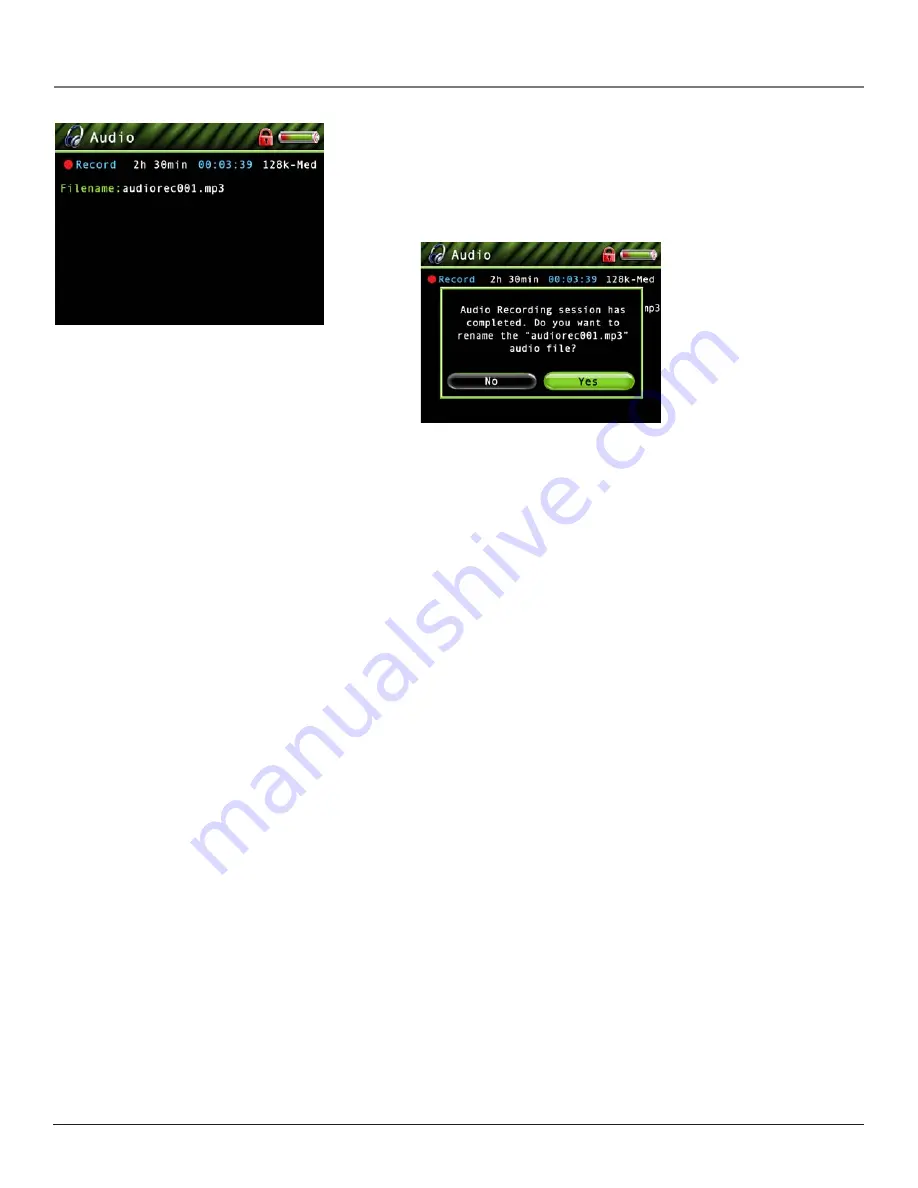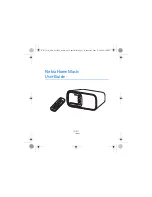
Chapter 3: Playing Files
22
8.
Press SELECT to begin recording, or highlight one of the pre-set times to record so you
don’t have to press Stop. Once recording begins, the record screen appears with status,
Recording time (if
Start Recording
was selected, this will be blank) elapsed time, recording
quality and the file name shown.
9.
If necessary, press Stop to stop recording. When finished recording, you will be prompted to
rename the new file. The following screen appears:
10. Select
No
and the default file name is used and you’re returned to Audio Navigation mode.
Select
Yes
and the on-screen keyboard appears. Go to
Using the On-Screen Keyboard
on page
31 for information.
Note:
Recorded audio files must use the .mp3 file extension. If a file extension
isn’t specified, then the system automatically adds the .mp3 file extension to the
file name during the save process.
11. Select
Done
from the keyboard screen when you’ve entered the new file name, or select
Cancel
to use the default file name. You’re returned to Audio Navigation mode.
If your stereo doesn’t have Audio Out jacks, you can record from the headphone jack using a
headphone to mini-Line In cable.
1.
Make sure your Lyra AV Jukebox is off.
2.
Connect the smaller end of the cable (mini-Line In) to the LINE IN jack on your Lyra AV
Jukebox.
3.
Connect the headphone end to the headphone jack on your stereo system. Follow steps 4-11
above.
From Computer
You can record audio from your computer using a headphone/line out 3.5 mm to mini-Line In
cable.
1.
Make sure your Lyra AV Jukebox is off.
2.
Connect the smaller end of the cable (mini-Line In) to the LINE IN jack on your Lyra AV
Jukebox.
3.
Connect the other end to the headphone or line out jack on your computer.
4.
Turn on the power to your computer, and select the file you want to record.
Follow steps 5-11 of
From Stereo System
.
































